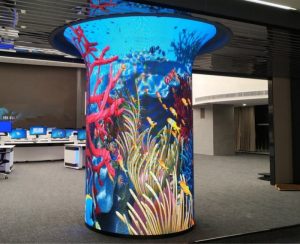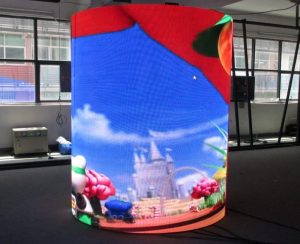Wireless LED screen is a new type of information media that has been widely accepted by social groups since its debut. Its “mobilais” display and networked information dissemination characteristics have been highly praised by the advertising industry, becoming a new type of advertising media.
According to the technology used, it can be divided into wireless communication methods such as WLAN, GRPS (WCDMA), utt.
1: In situations where there are buildings, plants, streets, utt. that are inconvenient or cannot be wired:
This type of display screen is mostly a medium size full-color display screen that requires real-time information dissemination. For this type of display screen, if conditions permit, we recommend using WLAN communication method first for this wireless LED screen. This is because, compared to the communication method of GRPS, WLAN only requires a wireless network card to be implemented. The cost is very low, and there is no need for additional traffic fees in the later stage.
2: Multiple LED screens located in different locations require unified management, centralized release, and inconvenient wiring:
This application is commonly found in schools, public institutions, government departments, streets, utt. Piemēram, the LED display screens on both sides of Shanghai Zhunhai Road have one LED display screen every ten meters, and the entire street has hundreds of display screens, which are managed uniformly. This type of display screen is suitable for GPRS communication due to its distance from the control center.
3: Mobile LED display screen:
The most typical application is car mounted display screens, especially LED displays in taxis. Due to the LED display screen constantly moving with the movement of the car and the need for centralized management, wiring is unlikely. This wireless LED display screen requires the use of GPRS communication method.
Wireless LED displays are mostly used in synchronous control systems through WLAN, while asynchronous control systems are mainly used in GPRS.
Common installation scenarios:
1. Wireless release of onboard information
Install wireless LED screens on operating vehicles such as buses and city taxis, for publishing commercial information, information announcements, city news, weather forecasts, traffic conditions, utt.
2. Wireless release of meteorological information
Install wireless LED display screens in buildings, viesnīcas, restorāni, residential areas, villages, utt., to release meteorological information,
Disaster warning information, utt
3. Wireless release of traffic information
Install wireless LED screens at traffic intersections, parking lot entrances, and parking platforms to publish information on road conditions, parking spaces, and temporary bus announcements, in order to efficiently guide traffic and pedestrian flow.
4. Wireless release of lintel information
Install wireless LED screens at store entrances, supermarket entrances, lobbies, and shelves for launching new products, promoting discounts, providing shopping guides, providing supply and demand information, pricing trends, merchant recommendations, and customer greetings, becoming a bridge for exchanging information between merchants and customers
5. Wireless release of video information
Installing wireless LED screens in bustling neighborhoods, bus stops, traffic intersections and other densely populated areas, using them for commercial advertising, news broadcasting, weather forecasting, film and television forecasting, stock market trends, sports information, welfare, football, service introductions, utt., is an excellent carrier for news media applications




